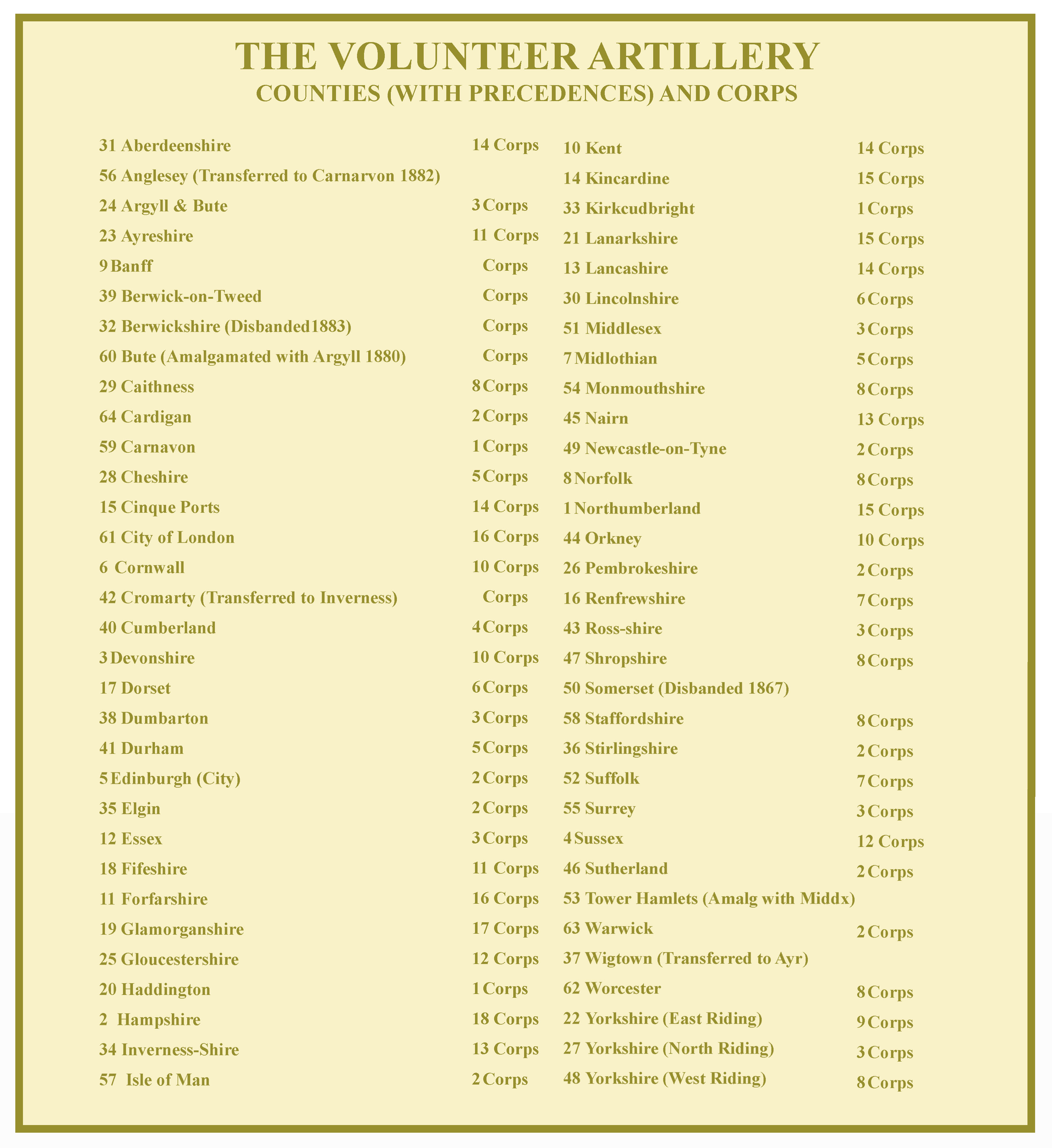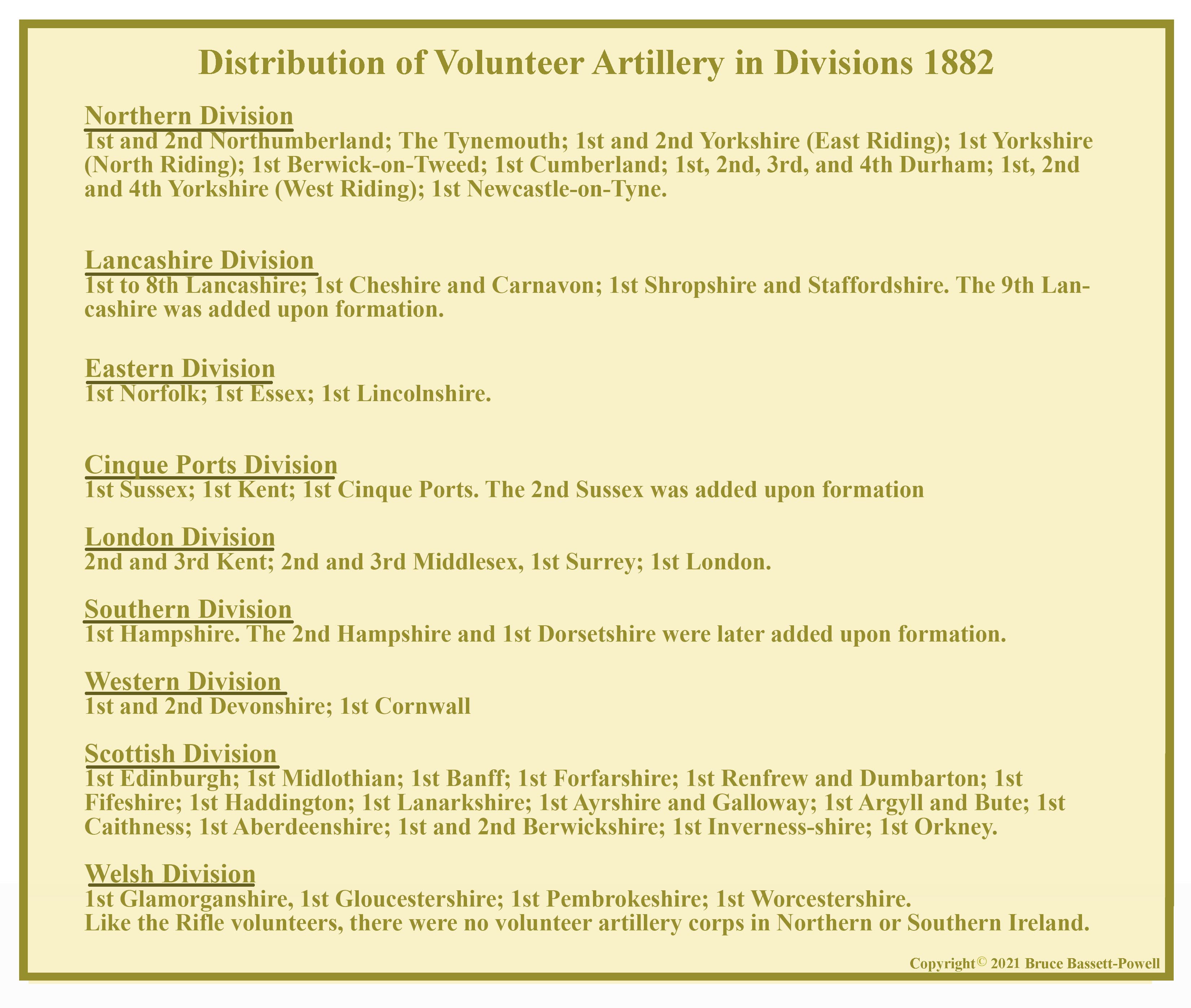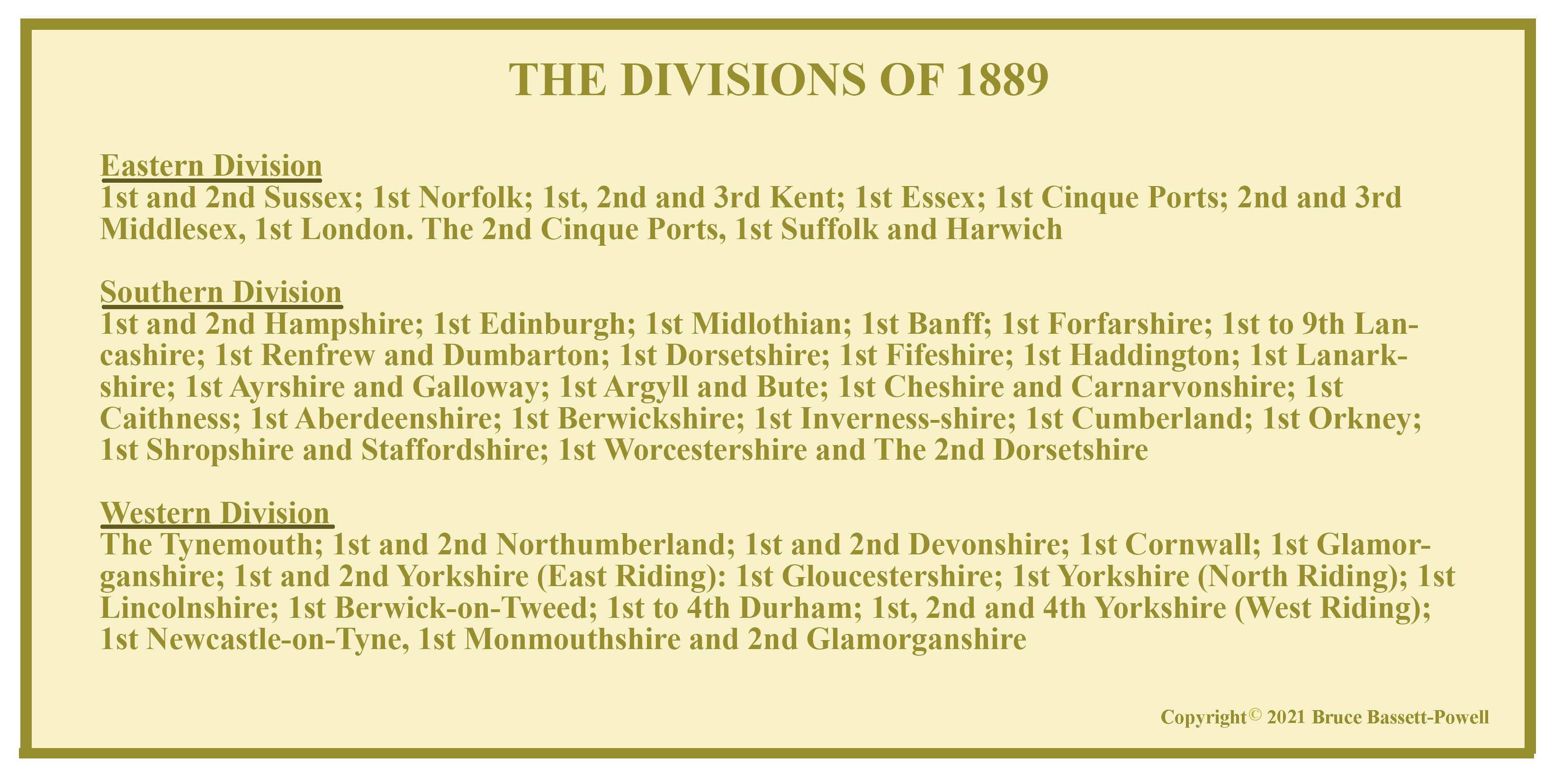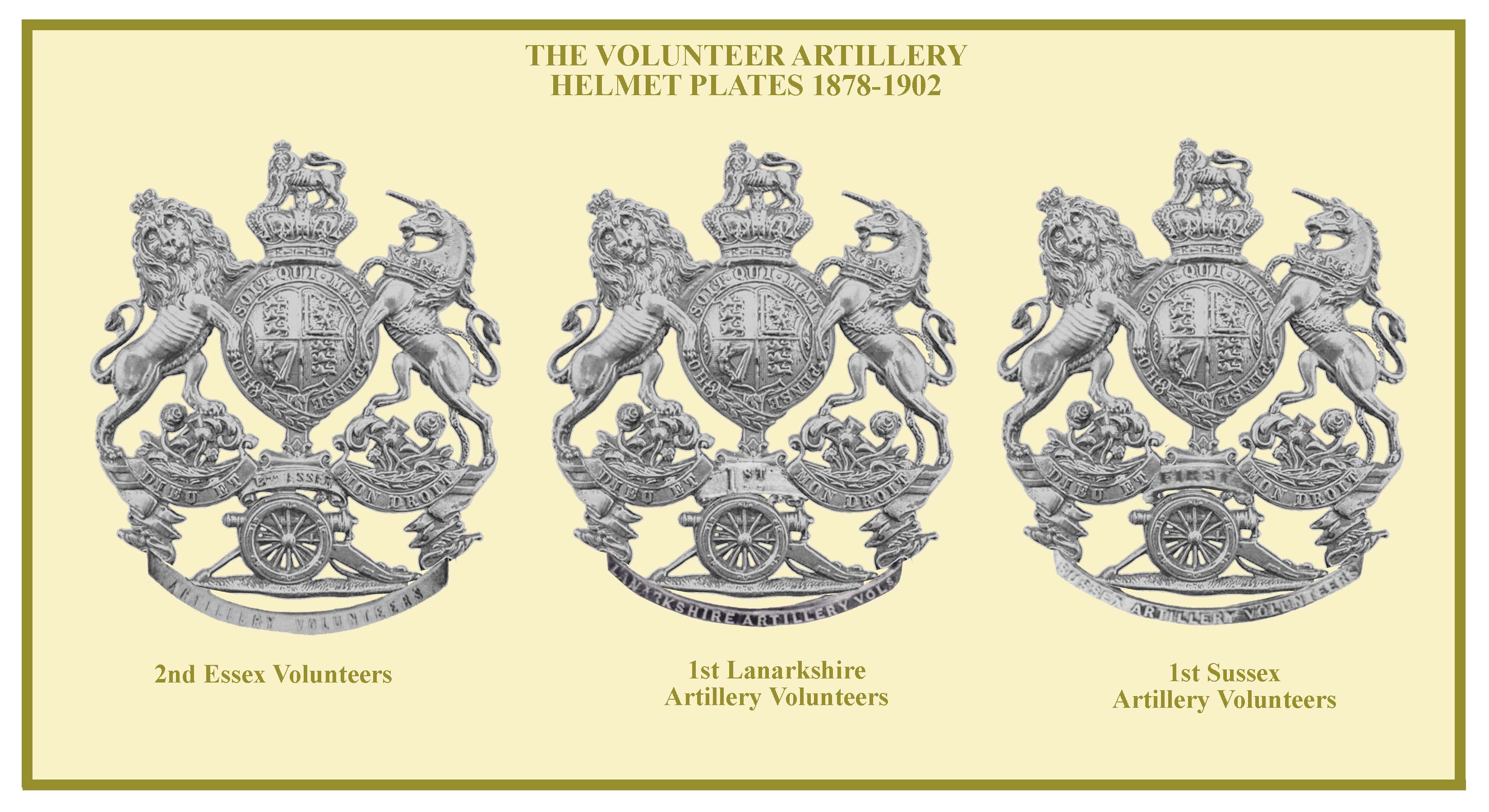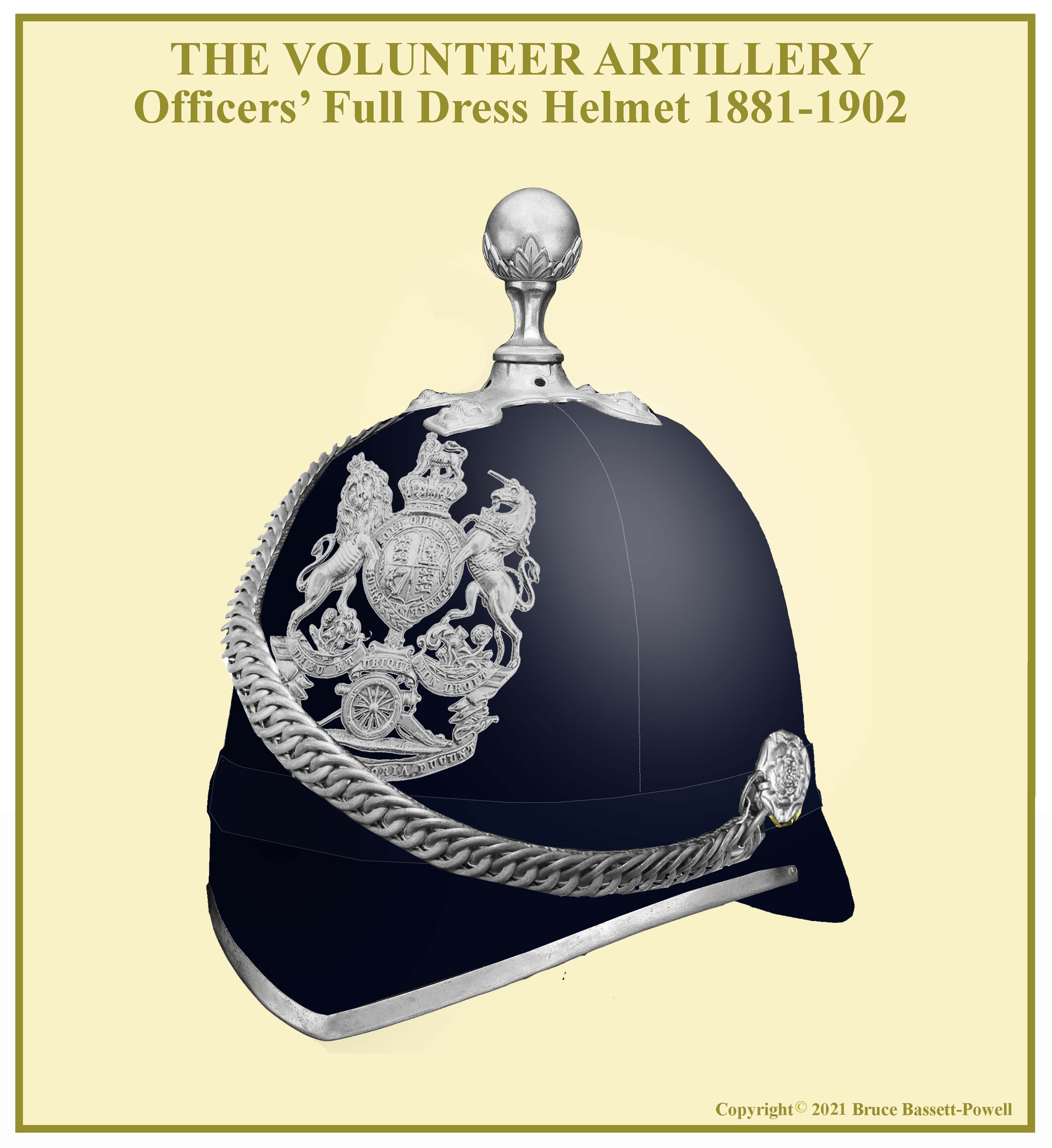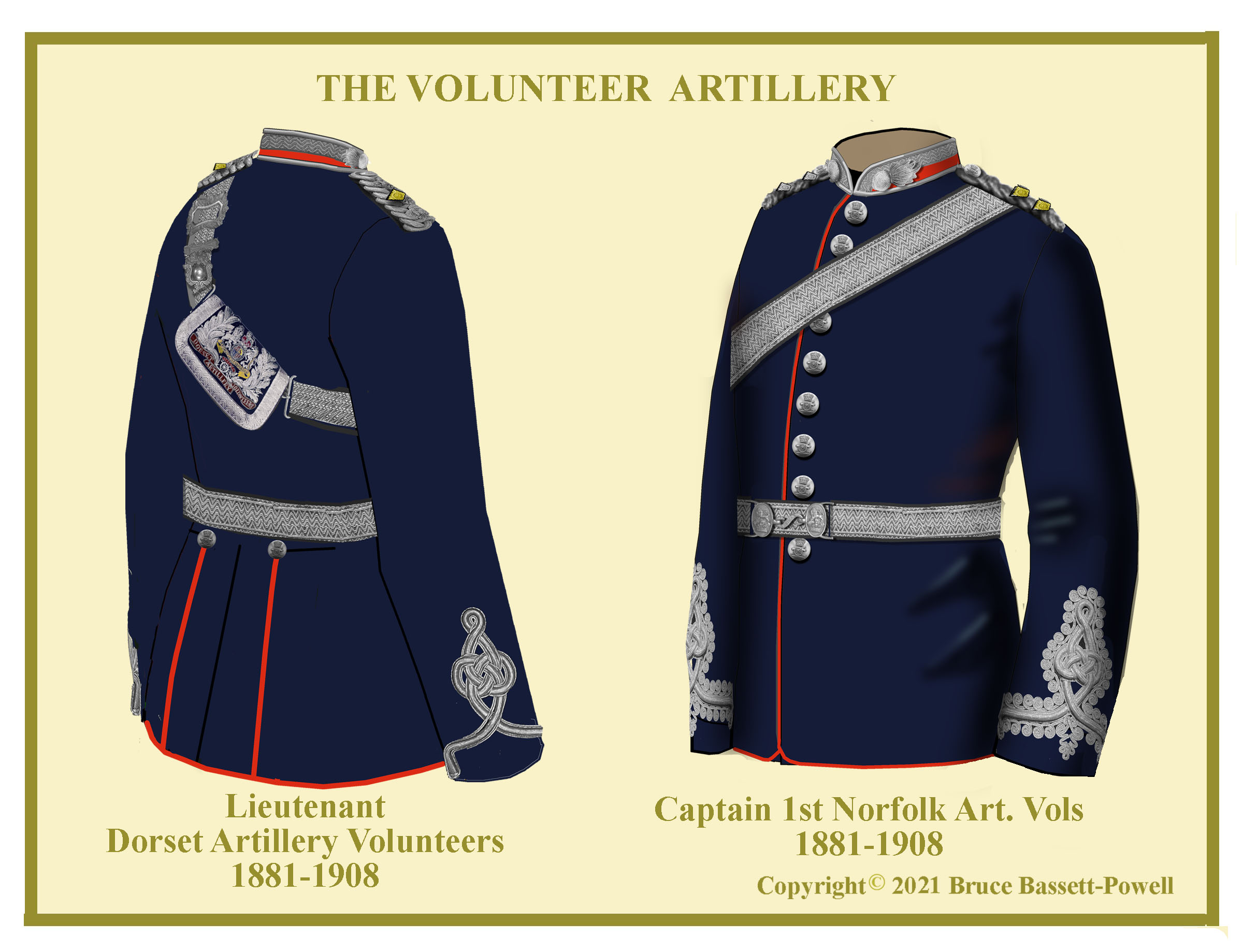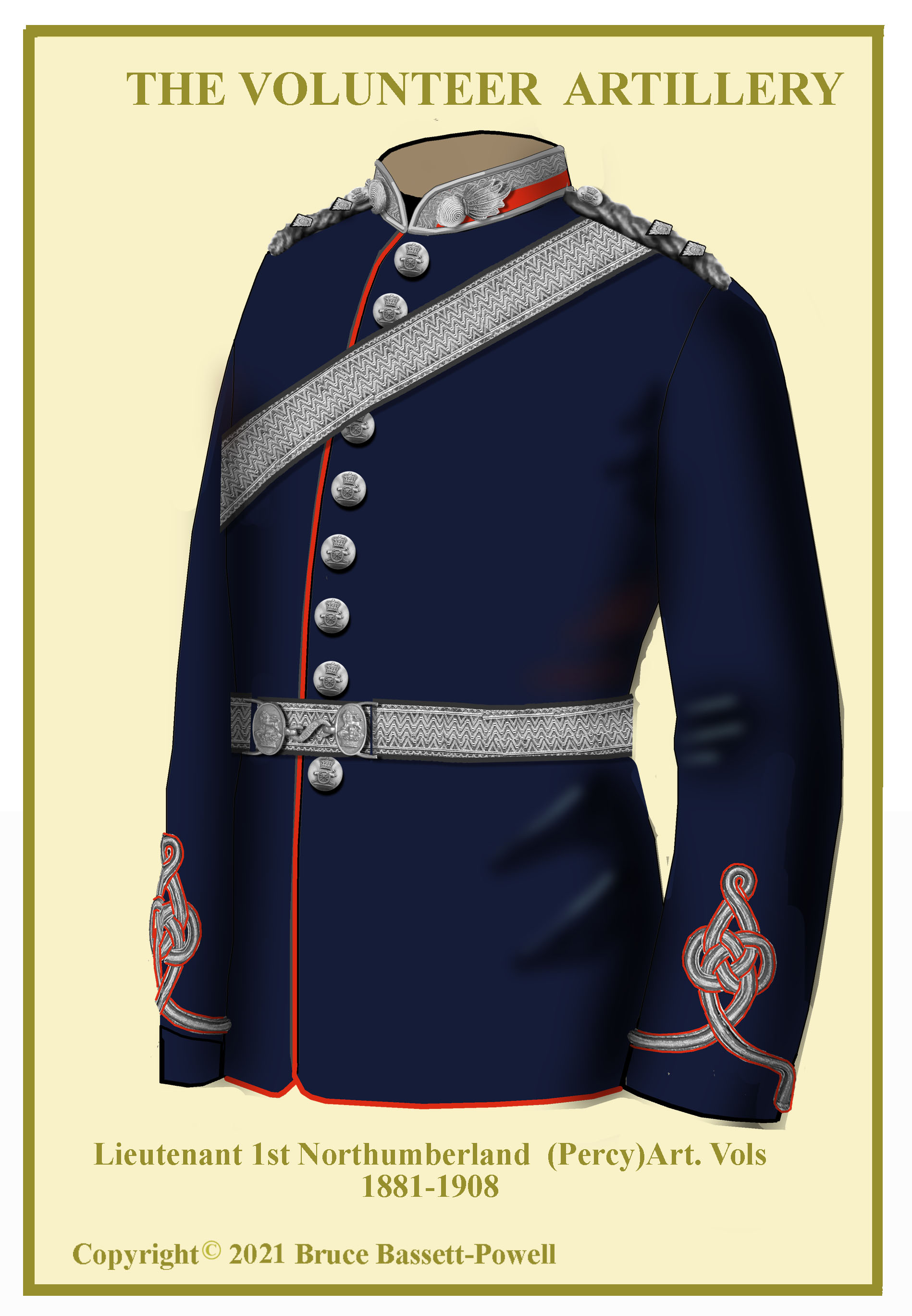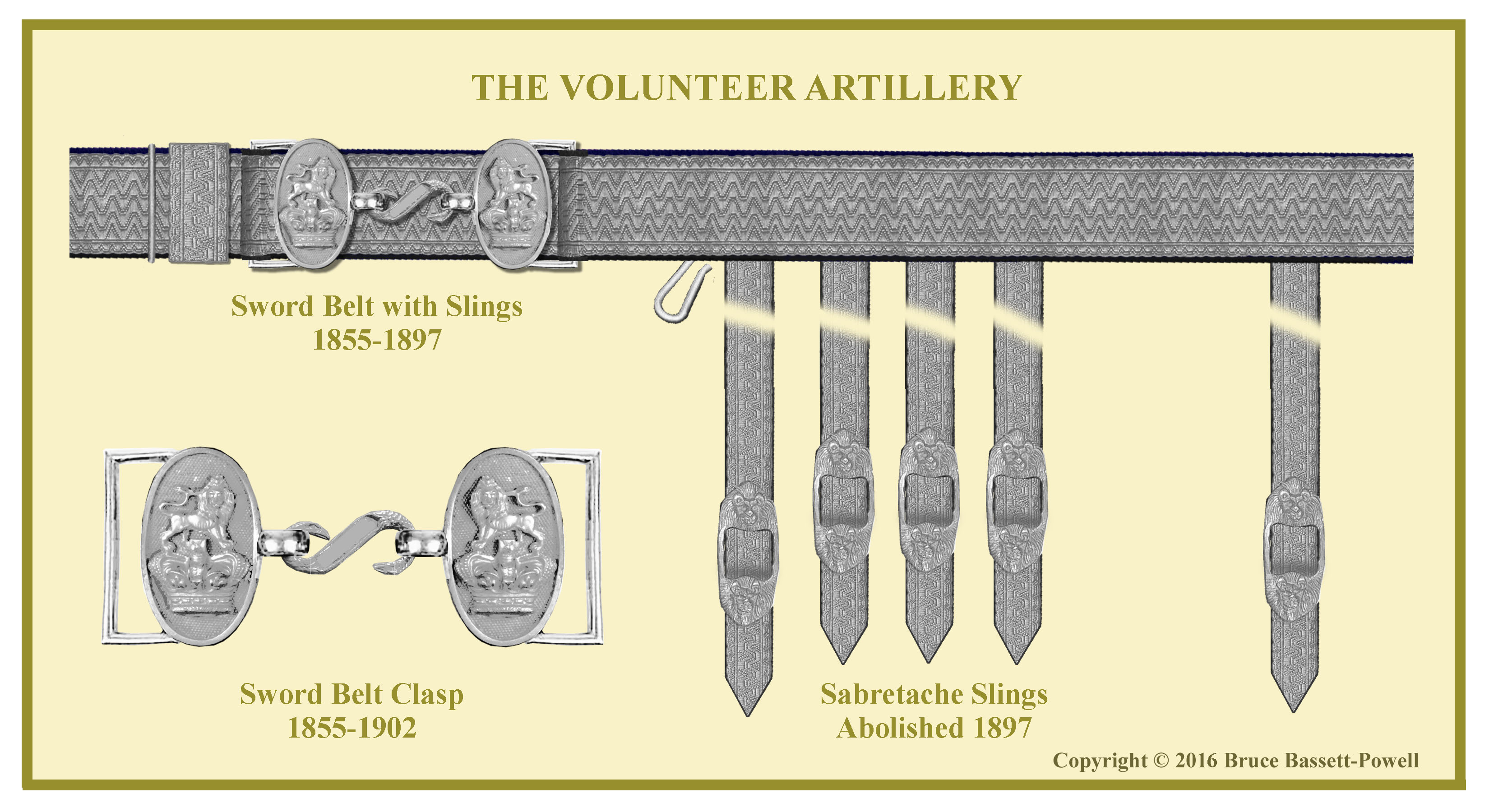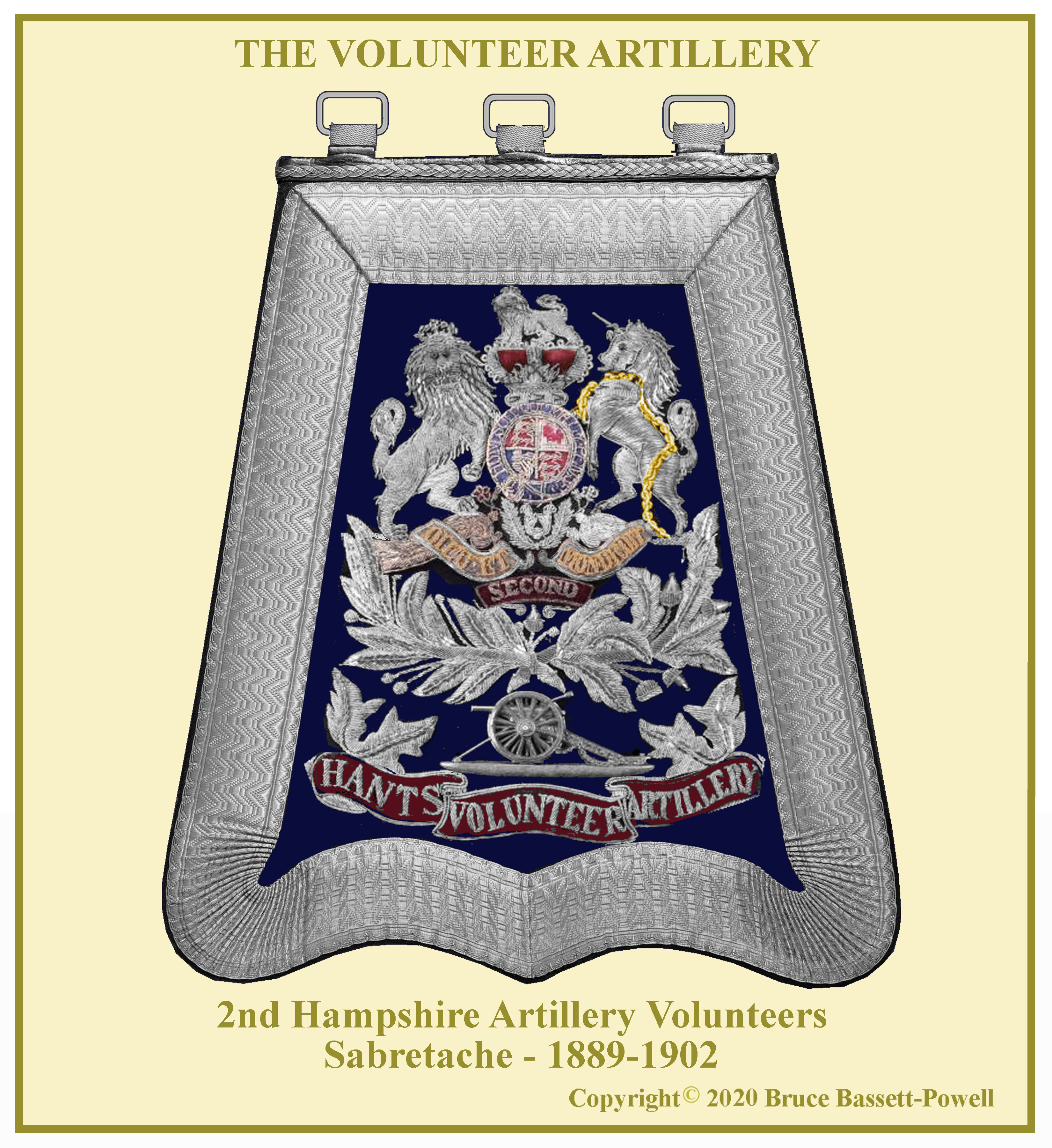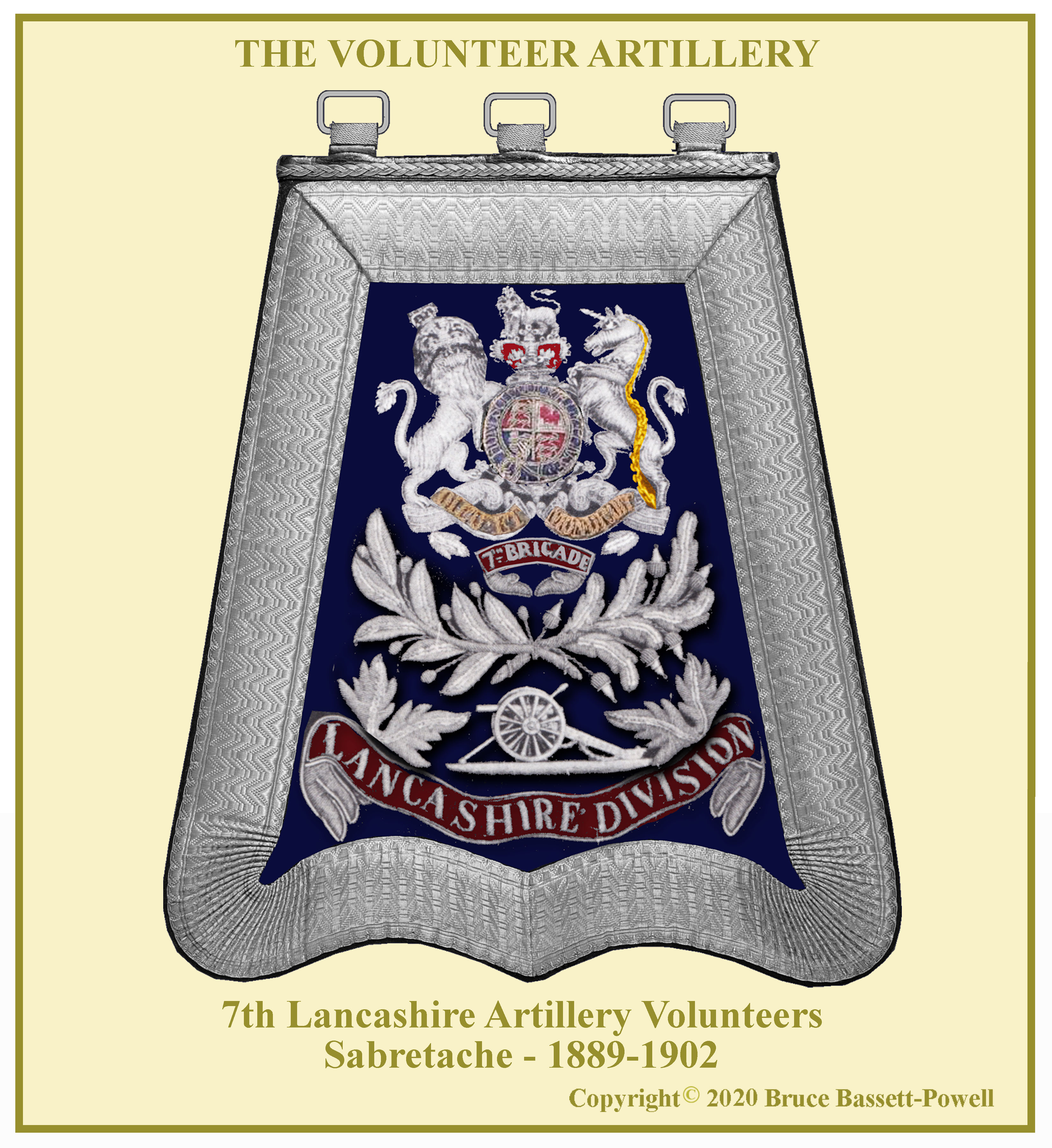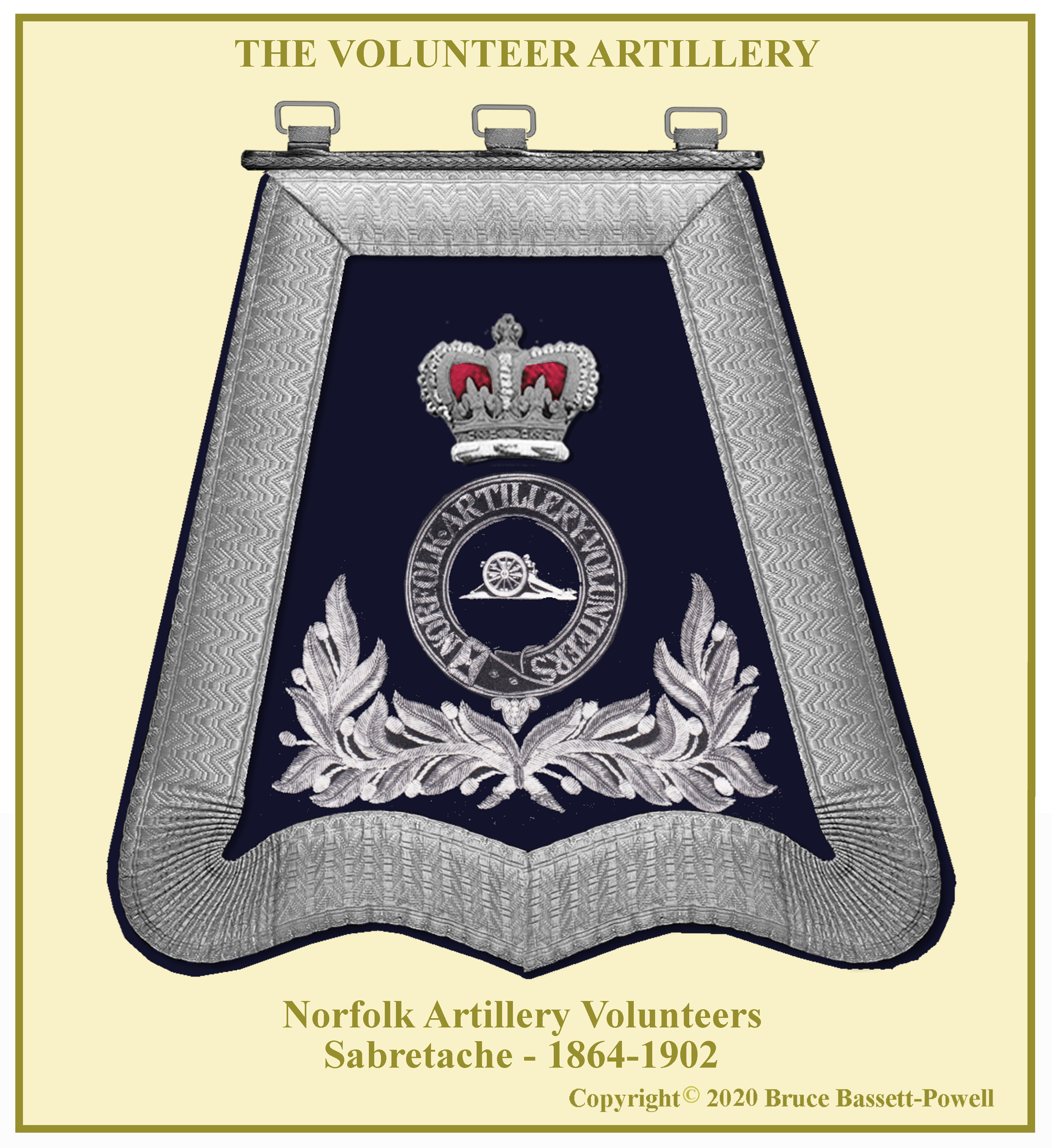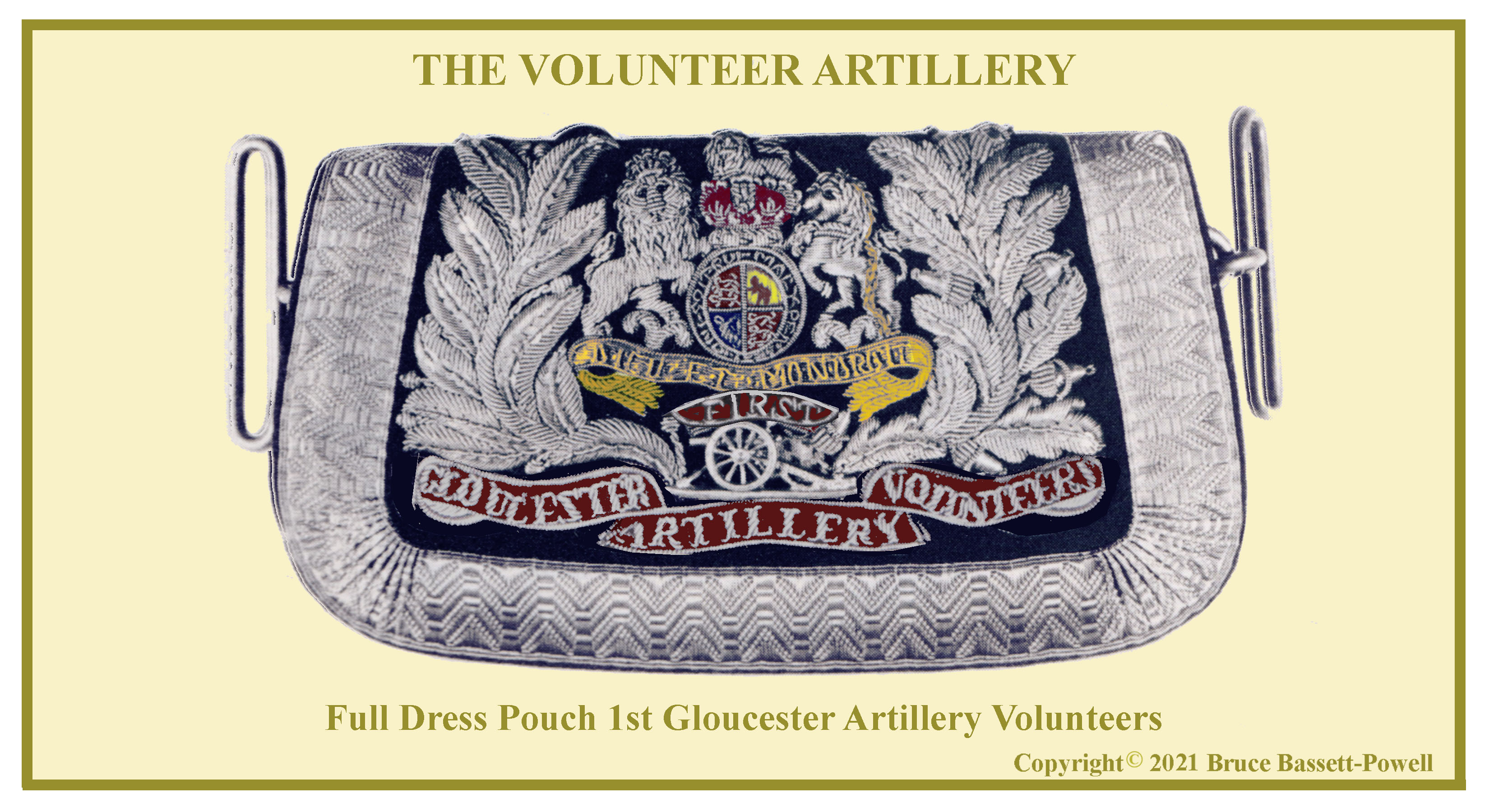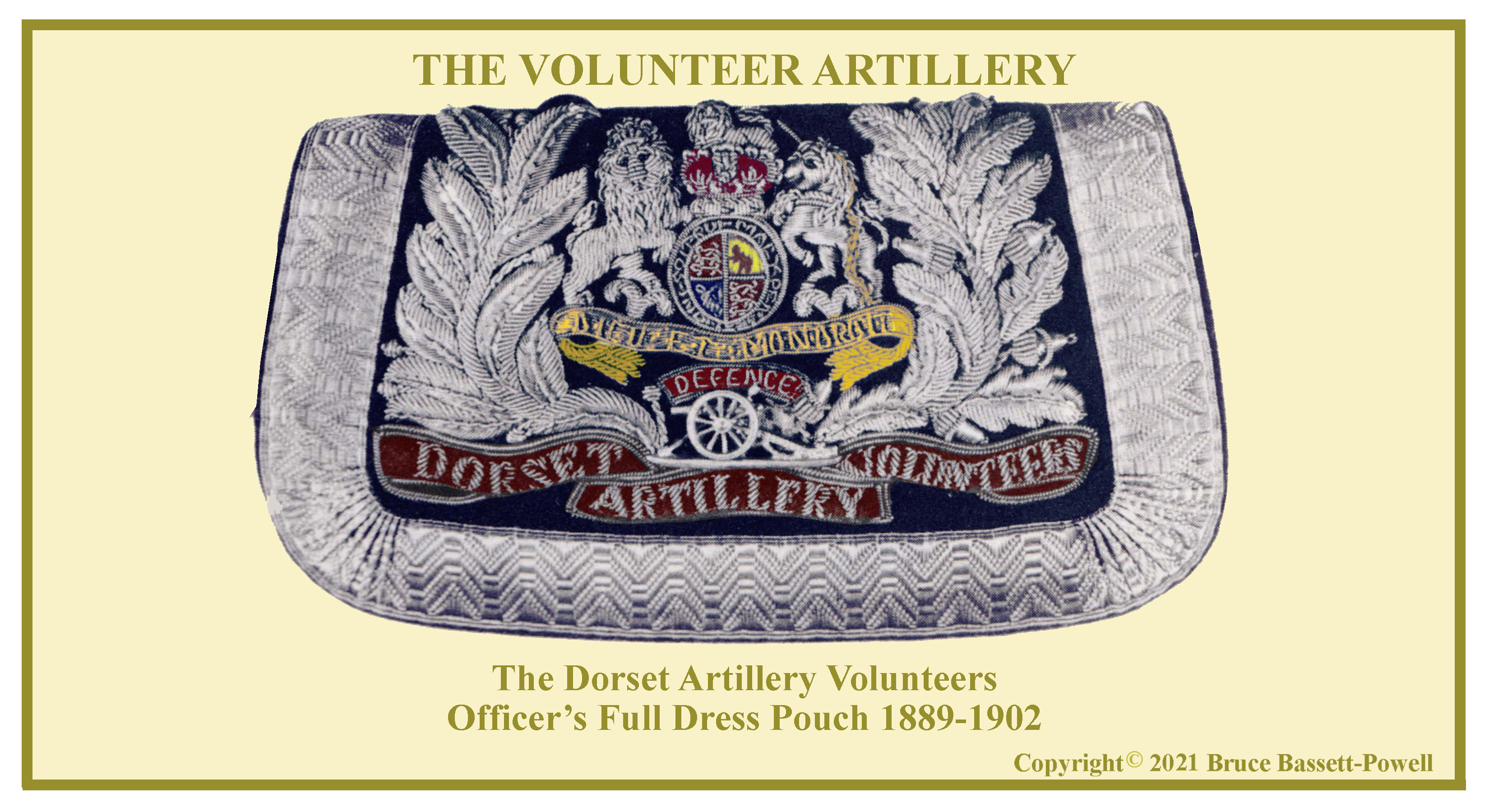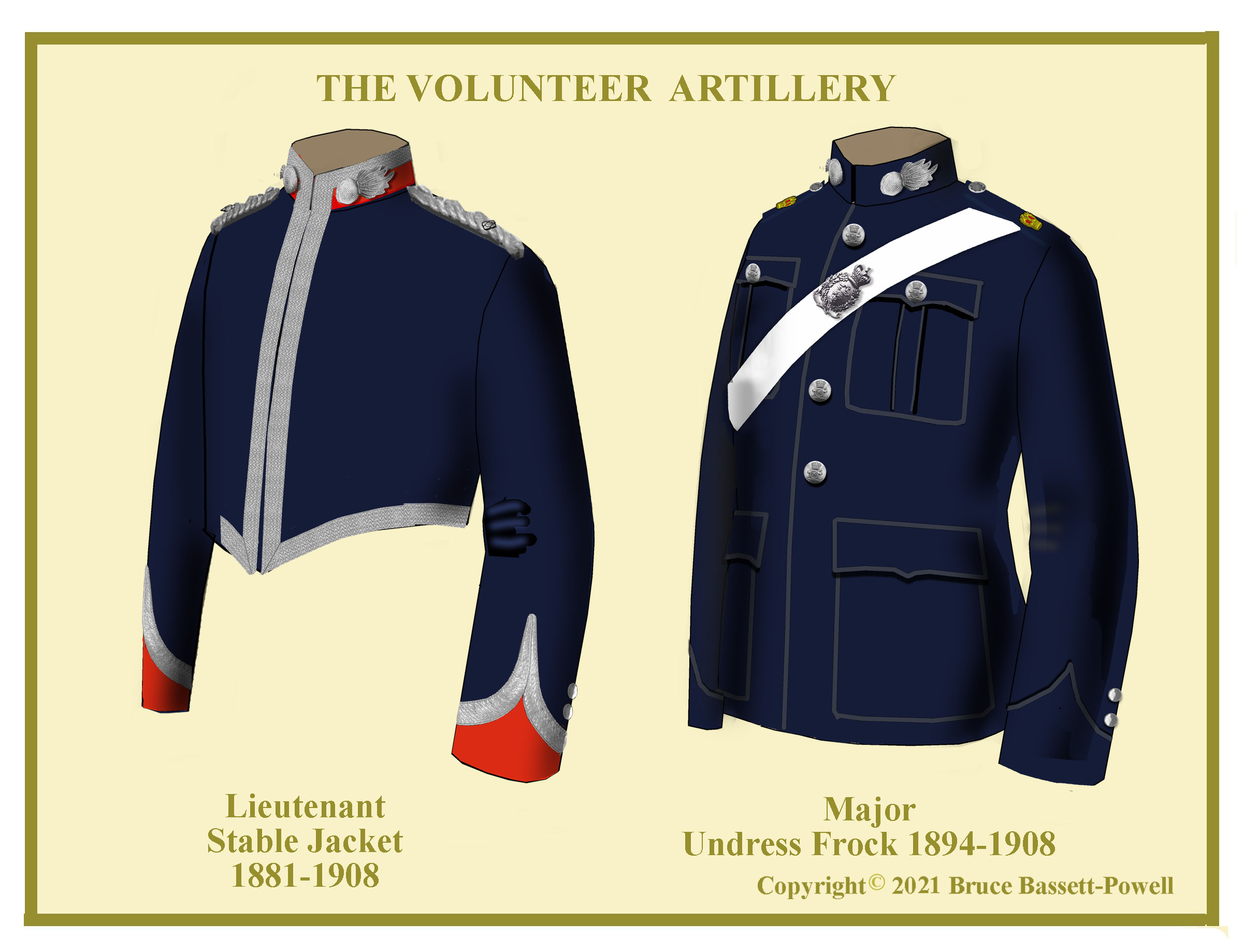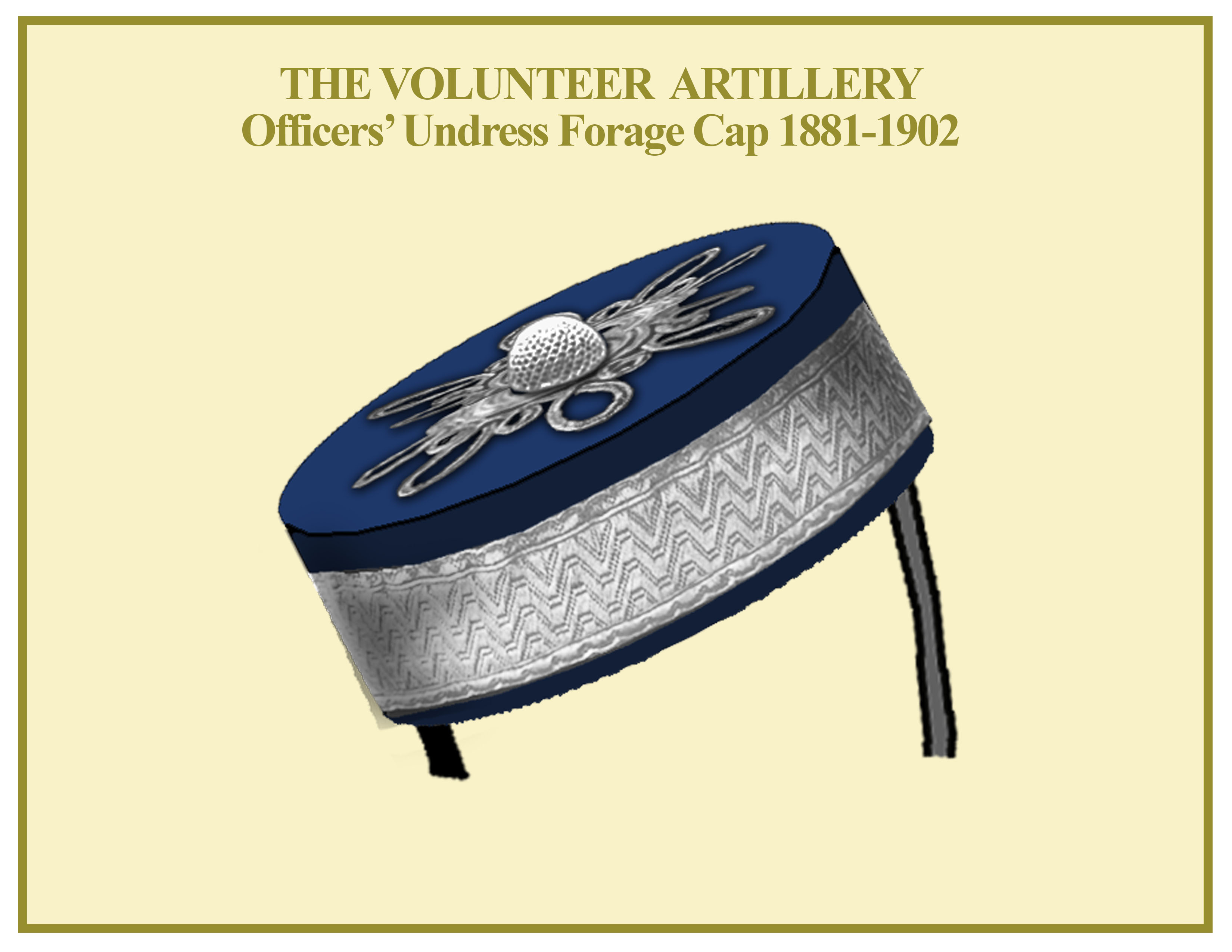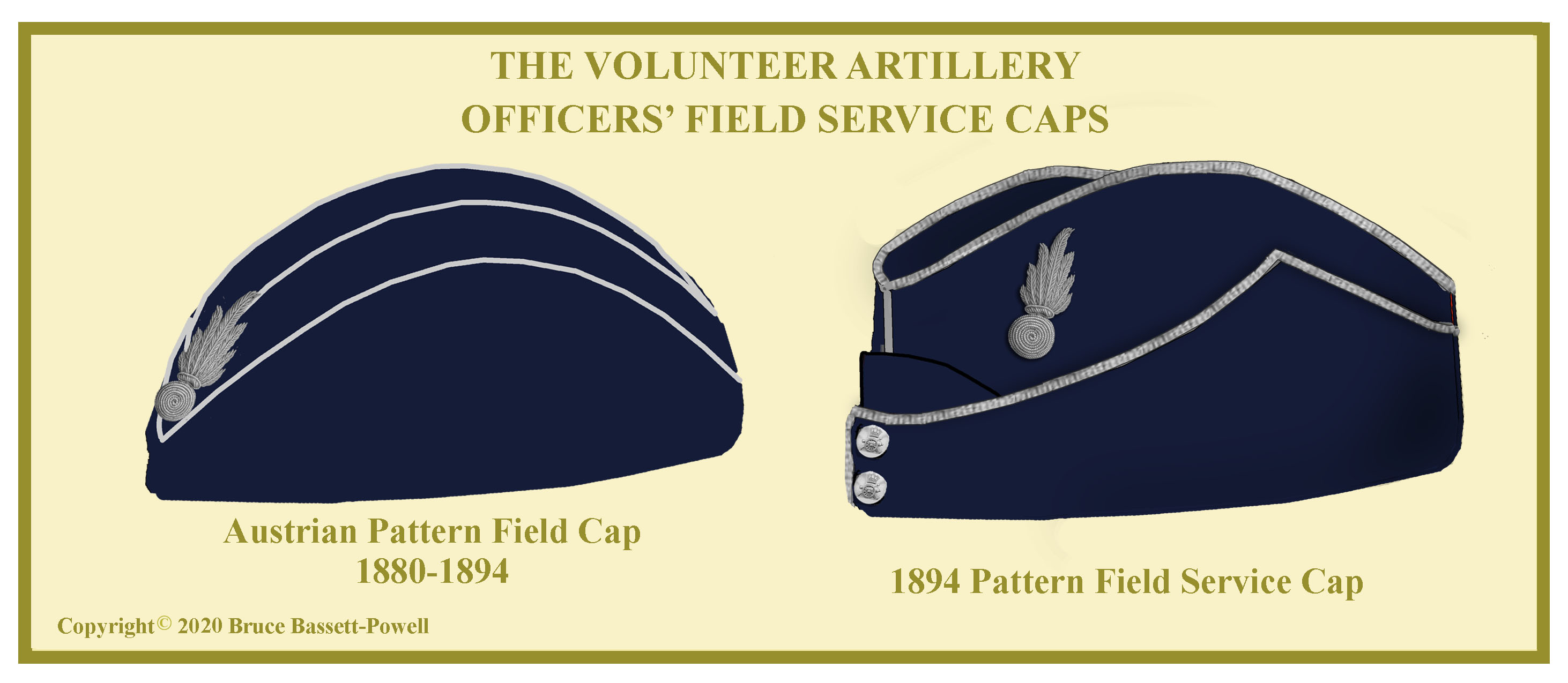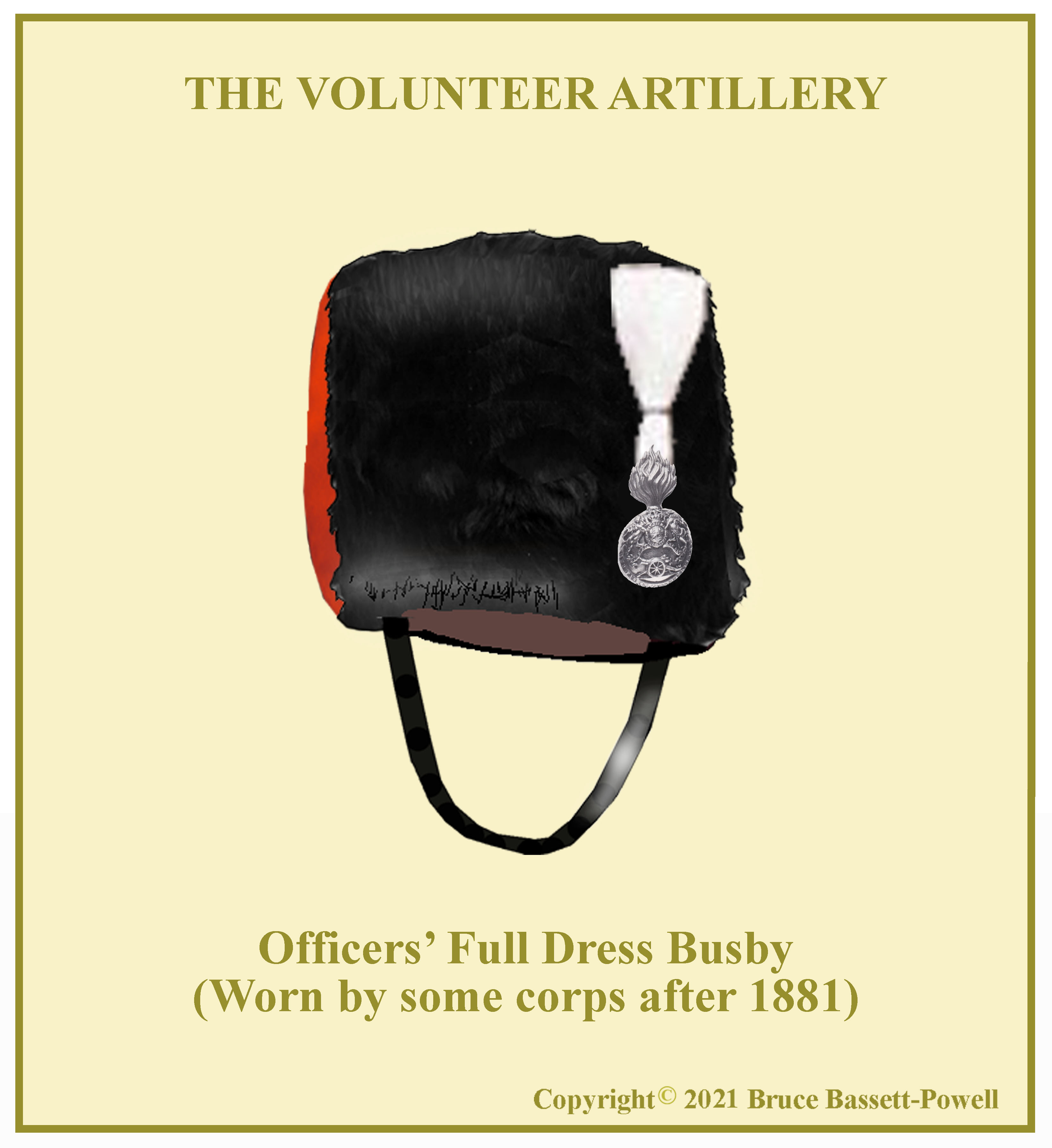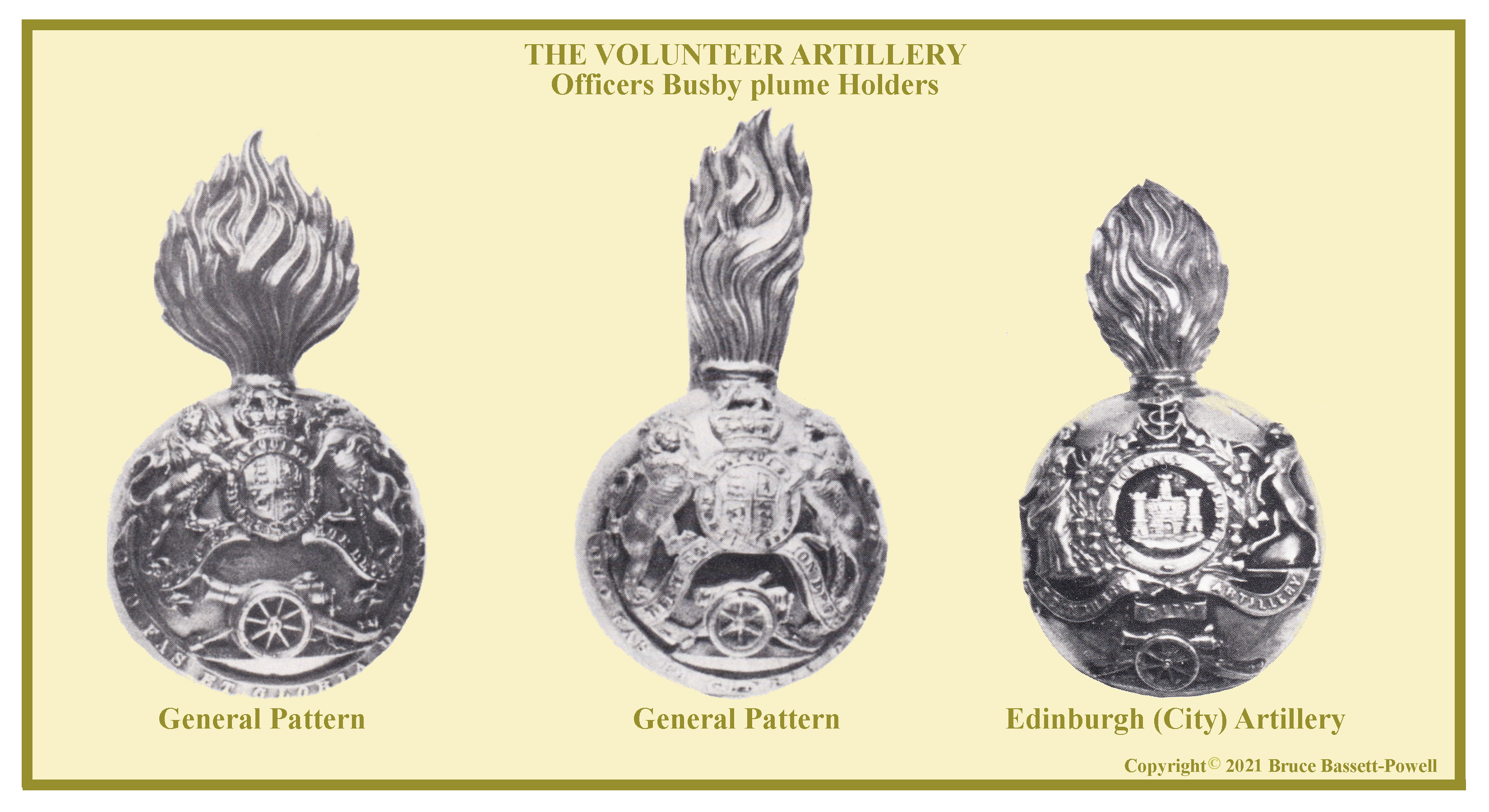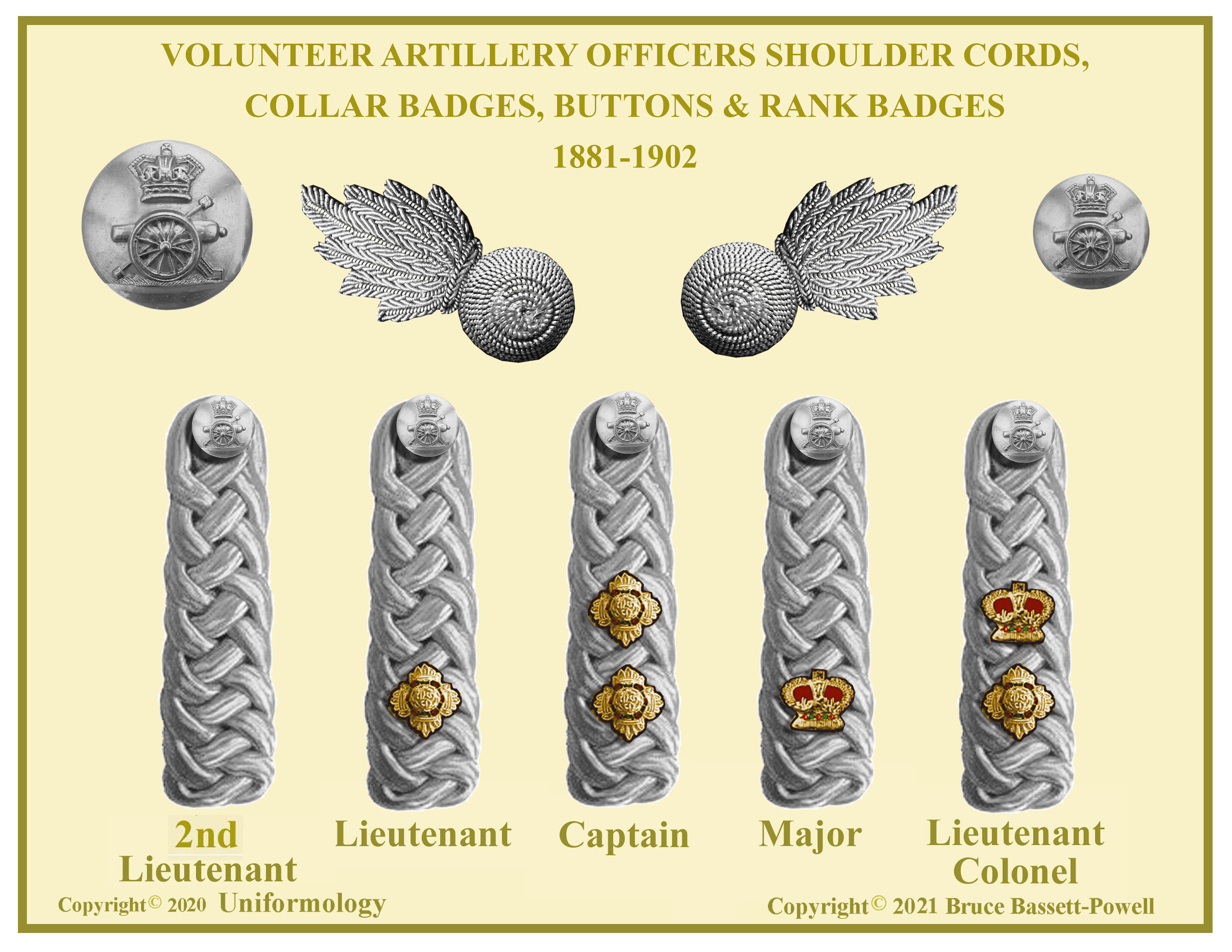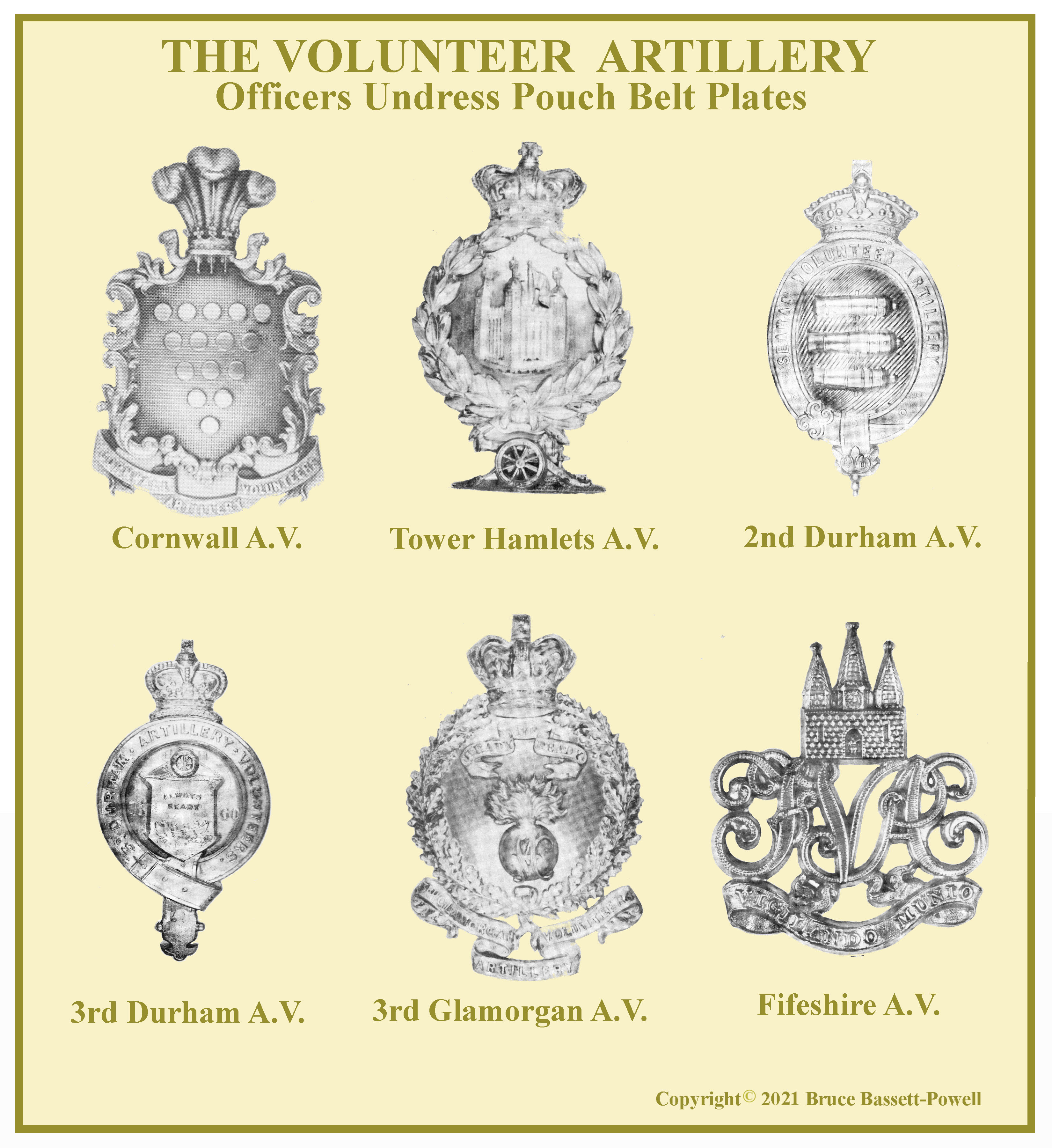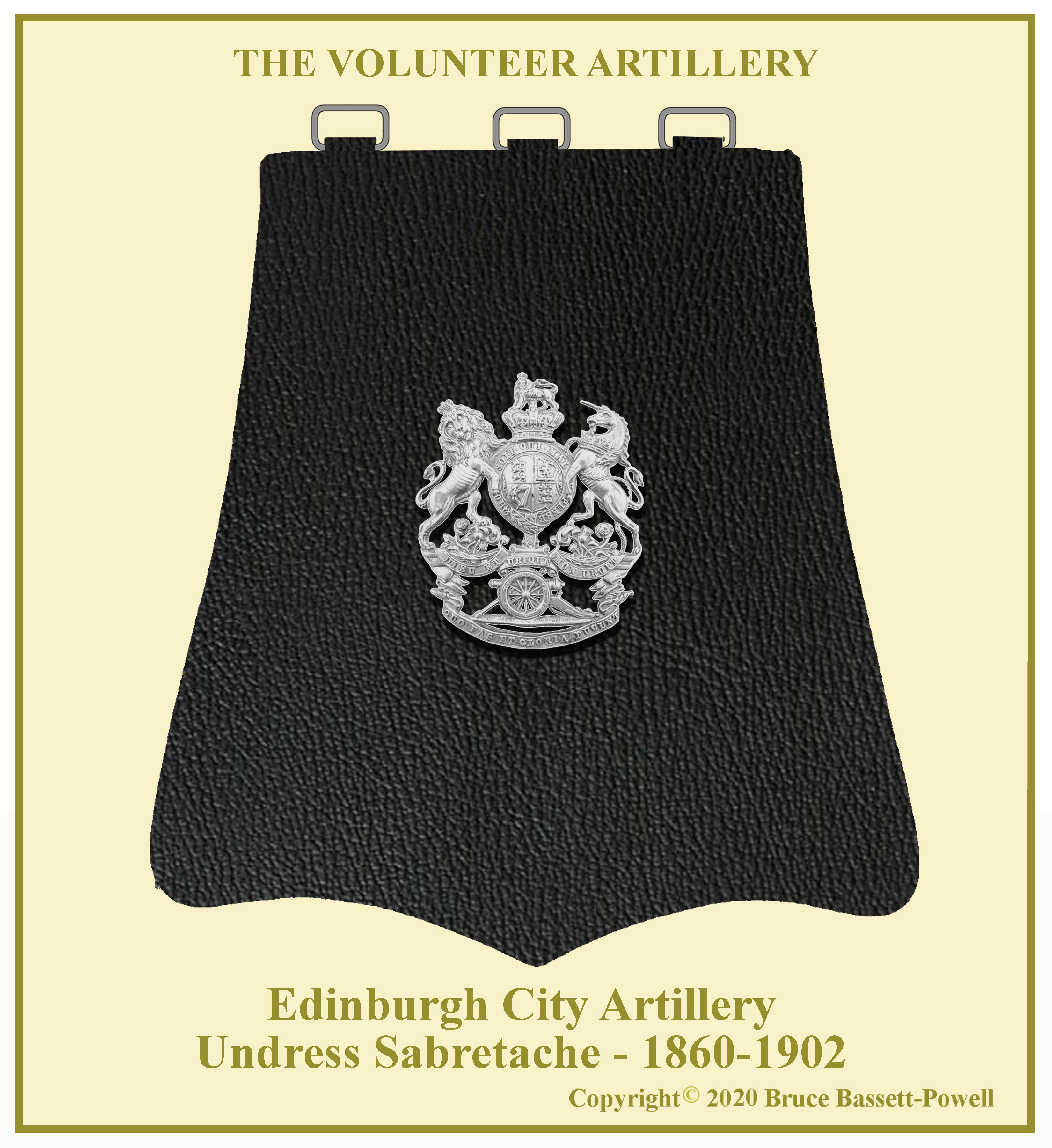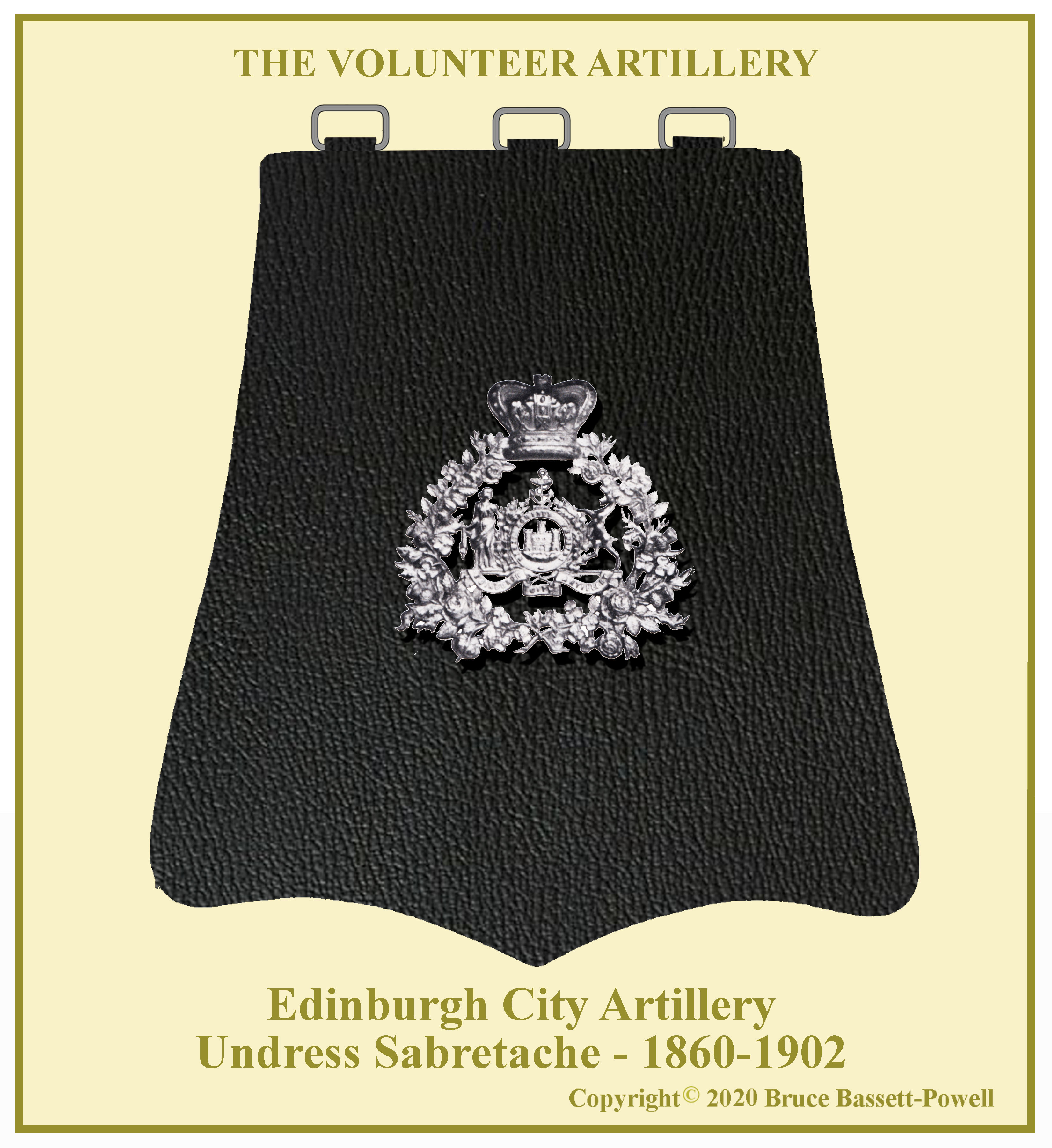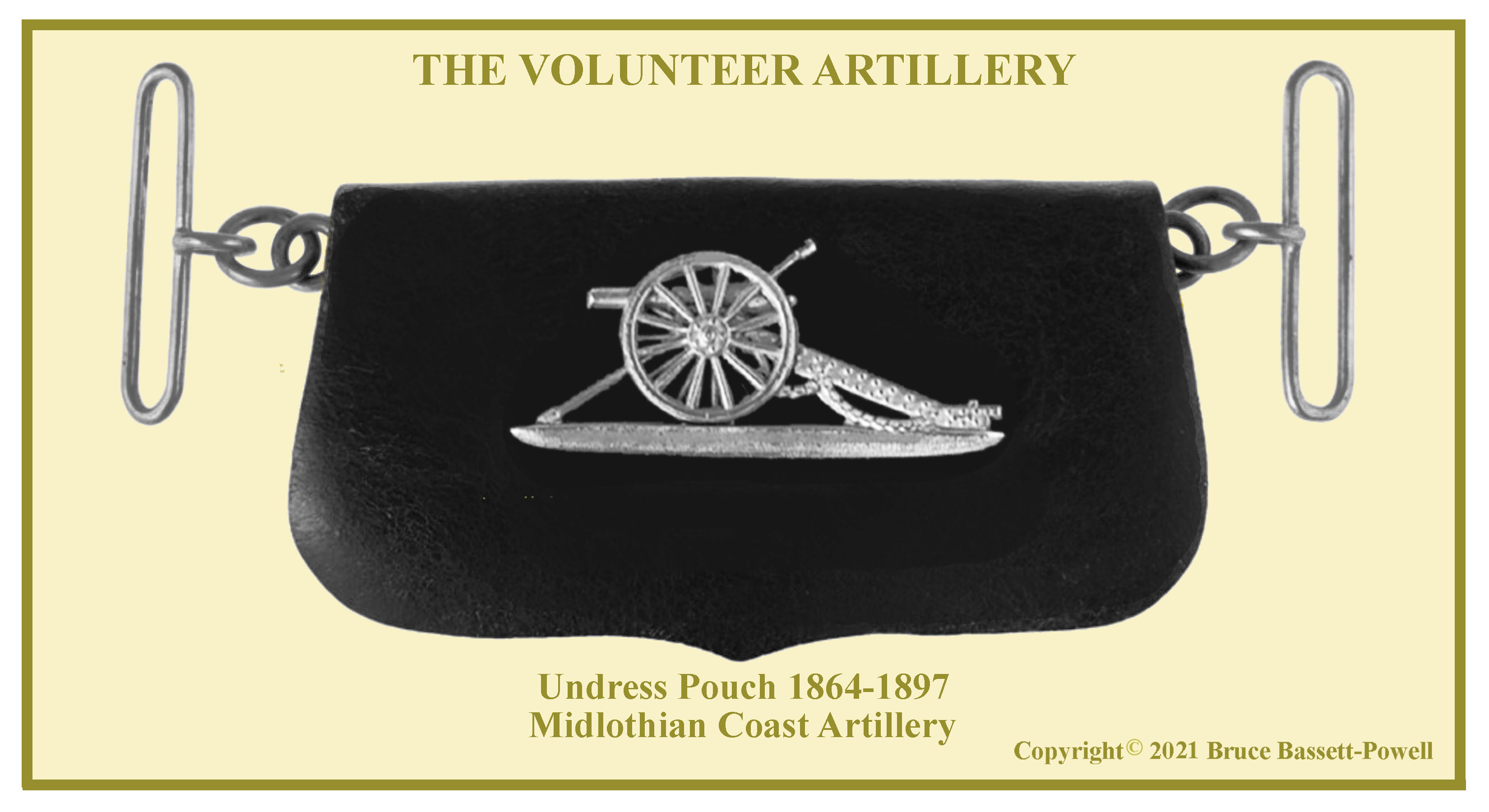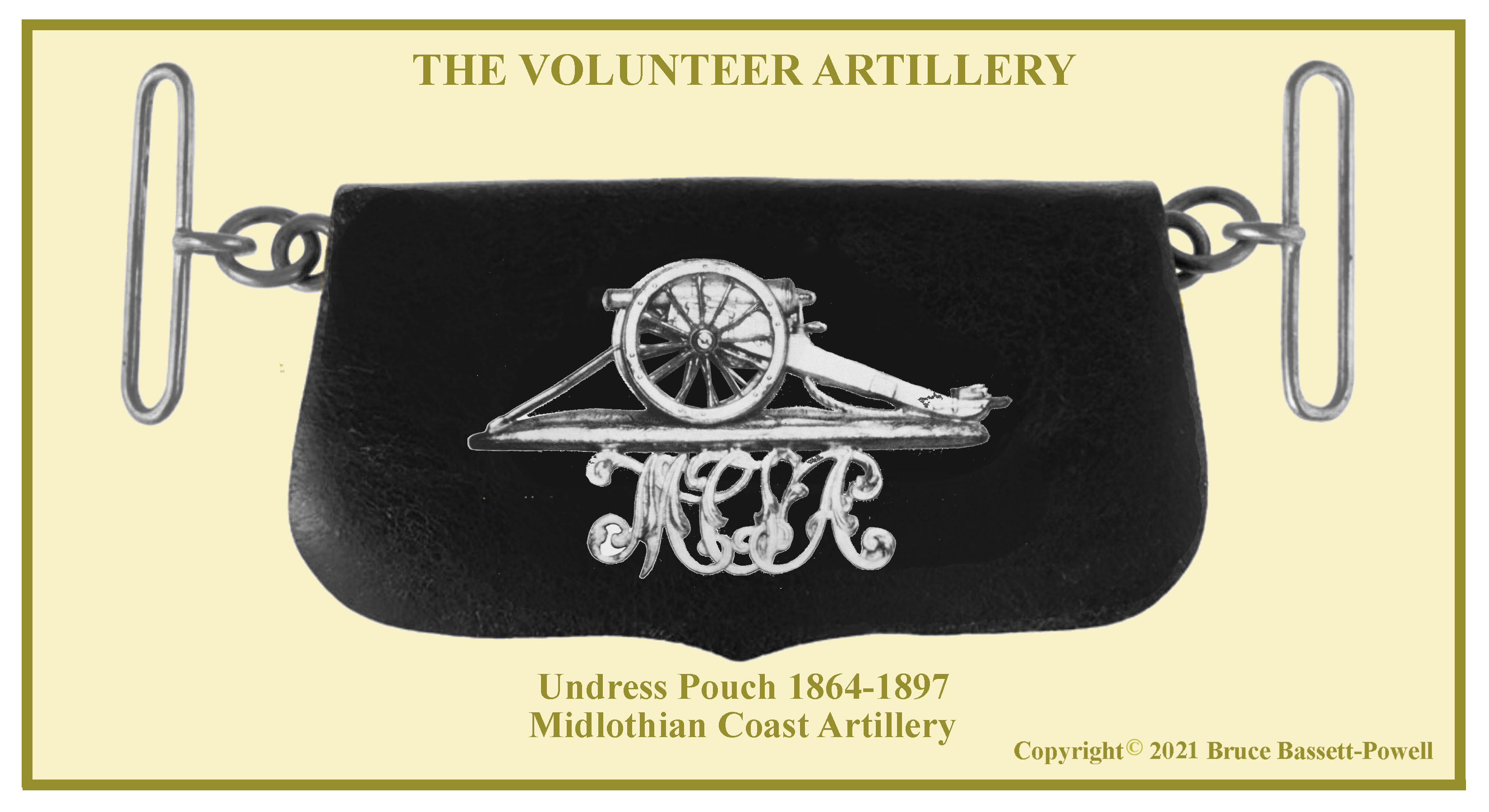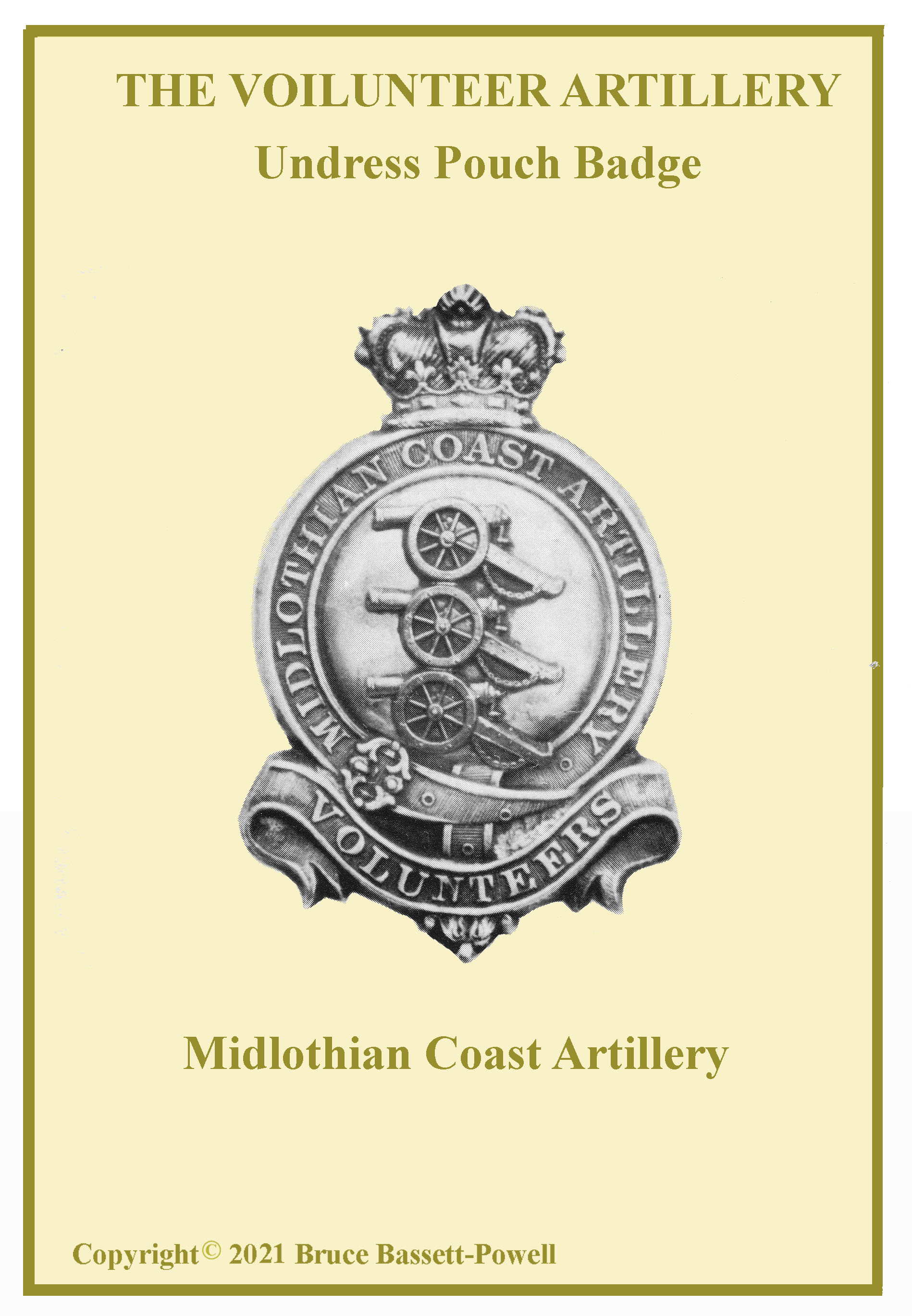THE VOLUNTEER ARTILLERY
PART I
UNIFORMS, ARMS & EQUIPMENT - ROYAL ARTILLERY
1881-1902
The raising of volunteer units during the various invasion scares of the post Crimea period accelerated in the late 1850s. At first, the notion of “amateur” soldiers being entrusted with artillery caused some concern amongst diehard officers fearing a dilution of standards for recruits to the regular forces. The establishment of the Militia Artillery (see section 2) allowed for a new approach to an all-volunteer artillery force.
The formation of Volunteer Artillery Corps was finally authorized on May 12th, 1859, and the Lord Lieutenants of Counties were given the authority to raise such units. Over the next months standards of drill and efficiency were laid down. The original scheme was that the volunteers would man coastal batteries. In July, establishments of volunteer artillery companies were set as not more than 80 nor less than 50 per company each officered by a captain with one lieutenant and one 2nd lieutenant. In the same month, precedents were also established for volunteers with Light Horse first, followed by Artillery, Engineers, Mounted Rifles and Rifles. The precedents of the County Corps was determined by the date the first corps of that county was raised. The Counties and their precedence are shown in the table below. Also shown are the number of companies, batteries or corps within that County admin
TIn 1882, along with the Militia, the Artillery Volunteer Corps were placed into nine of the large divisions that were organized that year with roughly the same counties in each. Like the Rifle volunteers, there were no volunteer artillery corps in Northern or Southern Ireland.
The Artillery re-organization of 1889 placed the volunteers into the three divisions of Western, Eastern and Southern.
During the years, many corps saw amalgamations and some disbandments. The original objective of the Volunteer Artillery was coastal defence, hence the designation Garrison Artillery, although their titles were to be “ Company or battery No., Blankshire Artillery Volunteers” (as in 2nd Essex Artillery Volunteers). In May of 1888 a number of Garrison companies in each corps were designated “Position Batteries”. These batteries, formed to complement the regular Field Artillery, were numbered first followed by the Garrison companies. After 1902 the divisions were abolished and the Volunteer corps were designated as Royal Garrison Artillery. until the creation of the Territorial Force.
UNIFORMS OF THE VOLUNTEER ARTILLERY
Upon creation in 1859, most corps were able to wear uniforms of their own design. This often resulted in some bizarre choices. Although the basic colour option was dark blue in most corps some adopted various shades of grey. Facing colours were commonly scarlet but in some cases, white was used. Many corps had black mohair frogging on their tunics. Headgear included French style kepis or peaked round caps. The 1st Cornish Corps wore blue jerseys and round caps. The Argyllshire Corps wore fisherman’s Smocks with Kilmarnock bonnets. One corps actually wore naval uniform. In 1860, the volunteers were ordered to adopt regular Royal Artillery uniforms with silver lace instead of gold.
As time progressed, the helmet plates reflected the designations of the various Corps. The upper scroll (instead of UBIQUE) usually had the number of the battery, either written or the actual number. The lower scroll displayed the county title i.e “Suffolk Artillery Volunteers”. By the late nineties, the lower scroll would display the Division.
The Volunteers adopted the 1878 pattern helmet in that year. At first it was fitted with a spike, but by 1881 it was replaced by a ball. The helmet plate was the standard Royal Artillery one in Silver for officers Initially the general pattern had the same mottoes on the scrolls, i.e. Quo Fas Et Gloria Ducunt on the lower scroll and the Upper scroll omitted the “UBIQUE” and replaced it with a spray of laurel leaves.
Busbies
Not all Volunteer batteries adopted the home pattern helmet. There were three notable Corps that retained the busby. All four corps of the Glamorganshire Brigade wore the busby in full dress at least until 1902. The Edinburgh City Volunteer Corps wore the busby until 1908. The 3rd Middlesex Artillery Volunteers wore the busby until 1914. (see below for further details).
Sword Belt
In The waist belt, slings and clasp were the same as the regular artillery except in silver. The "UBIQUE" on the snake clasp was omitted.
OFFICERS' TUNICS
In 1881, when the Militia artillery had reverted back to yellow/gold lace on their uniforms, the Volunteers retained their silver lace, as befitted the Army Order regarding lace for volunteers. The officers of the Norfolk and Dorsetshire corps (above) have conventional collar and cuff decorations in silver instead of Gold lace.
The Volunteer Artillery continued to bring individuality to items of their dress. The scarlet piping on the cuff lace of the Lieutenant of the 1st Northumberland (Right) is typical. This Corps was one of the few who had the name of its colonel, Percy, in the title. In this case, The Duke of Northumberland.
The full dress tunic continued to be the 1855 pattern and for the most part, the Artillery volunteers did not modify their dress in 1891 to conform to the Royal Artillery changes. For example, the rear skirt piping did not change.
Sabretaches
The sabretaches were generally a reflection of the ones worn by the regular artillery in silver bullion instead of gold. The upper scroll usually bore the number of the corps in silver on a crimson velvet background. The lower scroll bore the title of the County or Division. Above that was the Gun in silver metal. Along with all other corps, sabretaches were abolished in 1902.
The Norfolk sabretache was first adopted in 1864. It may have been carried until abolition.
Pouches
The Pouches bore the same decorative style as the sabretache. There were Corps with differences such as the Norfolk Corps above whose Pouch mirrored that of the Sabretache.
Busby Plume Holders
The Plume holders were the same as those worn by the regular Artillery from 1856 except in silver. The officers versions had the Royal Arms and gun separately affixed to the ball. The Edinburgh City Volunteers holder had the Arms of the city mounted on the ball.
OFFICER'S UNDRESS
Round Forage Cap
This was identical to that worn by the Royal Artillery with silver lace and button.
Field Service Caps
These followed the patterns worn by the RA with silver piping and badges. Note the grenade badge on the 1894 pattern cap omitted the scroll with UBIQUE.
Mess jacket and Undress Frock
The stable jacket and mess waistcoat were the same as the regular Artillery with silver lace distinctions.
The Frock was also of standard pattern. The Volunteer Corps seemed to prefer the white waistbelt and pouch belt which was often decorated with a regimental pattern badge. (See below)
NEXT:
UNIFORMS OF OTHER RANKS
and CORPS WITH SPECIAL DISTINCTIONS
Undress Sabretache
The stable jacket and mess waistcoat were the same as the regular Artillery with silver lace distinctions.
The Frock was also of standard pattern. The Volunteer Corps seemed to prefer the white waistbelt and pouch belt which was often decorated with a regimental pattern badge. (See below)
Undress Pouches
The stable jacket and mess waistcoat were the same as the regular Artillery with silver lace distinctions.
The Frock was also of standard pattern. The Volunteer Corps seemed to prefer the white waistbelt and pouch belt which was often decorated with a regimental pattern badge. (See below)


